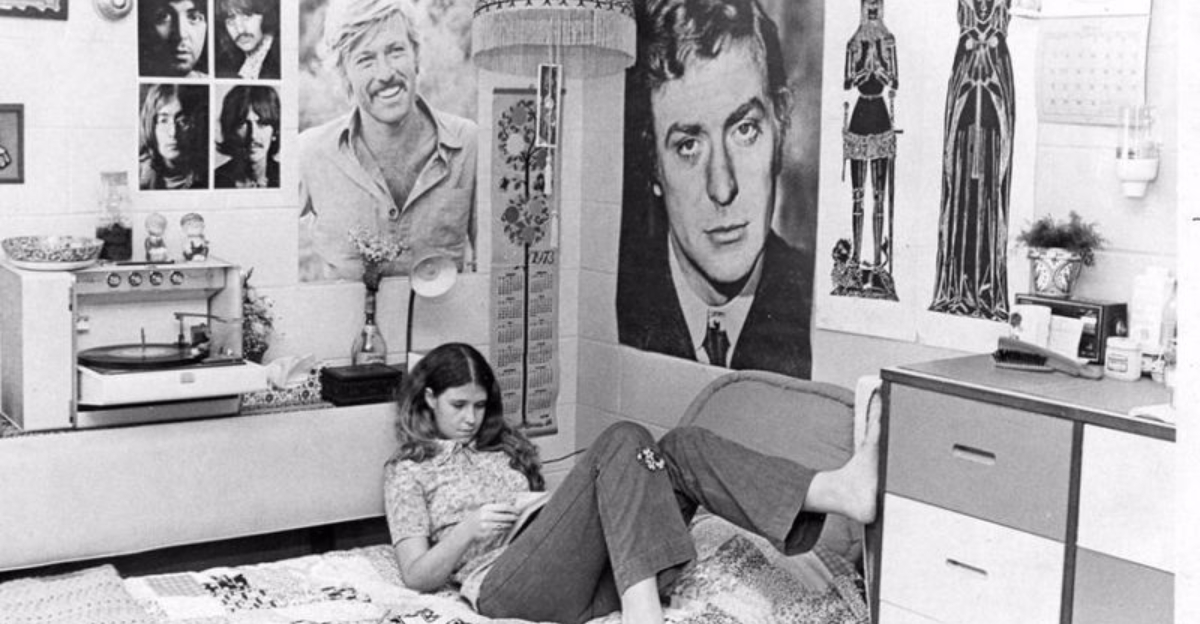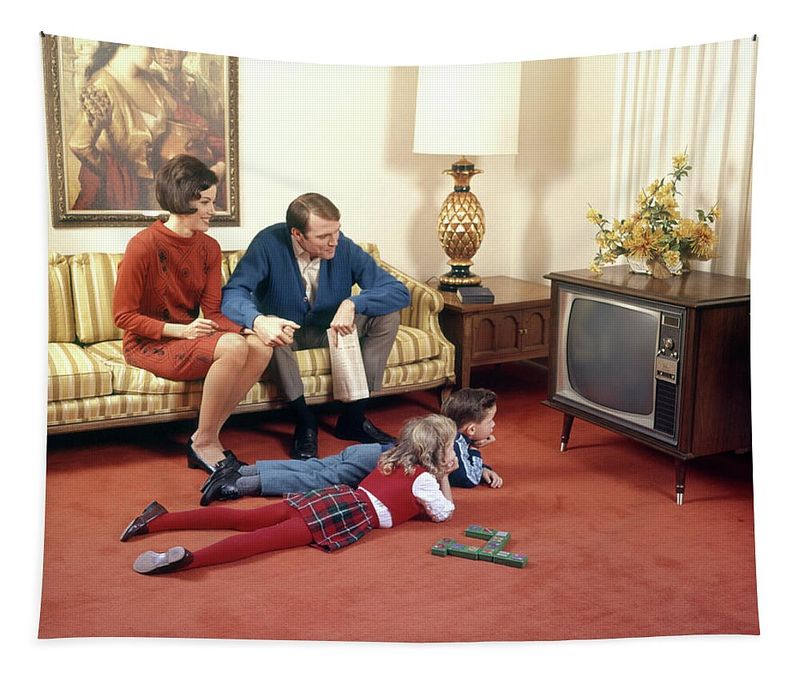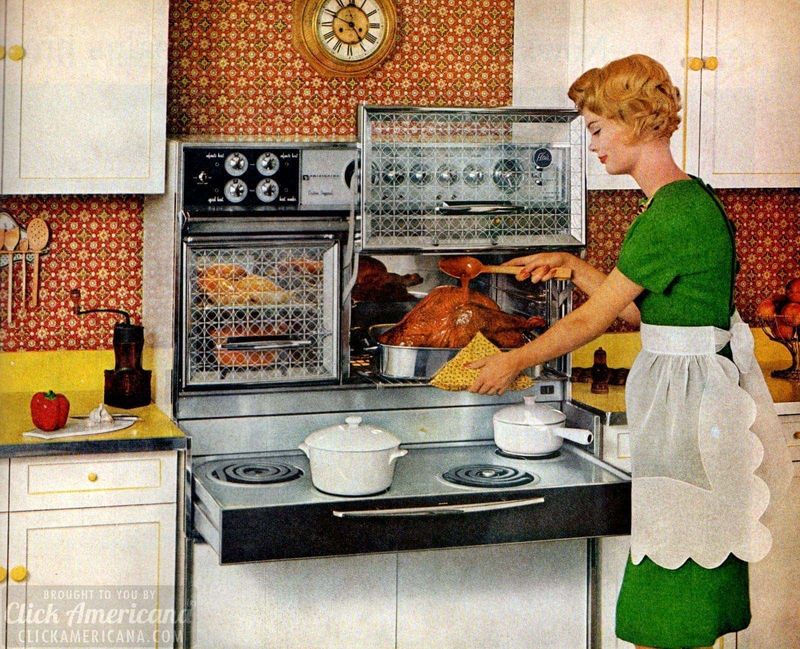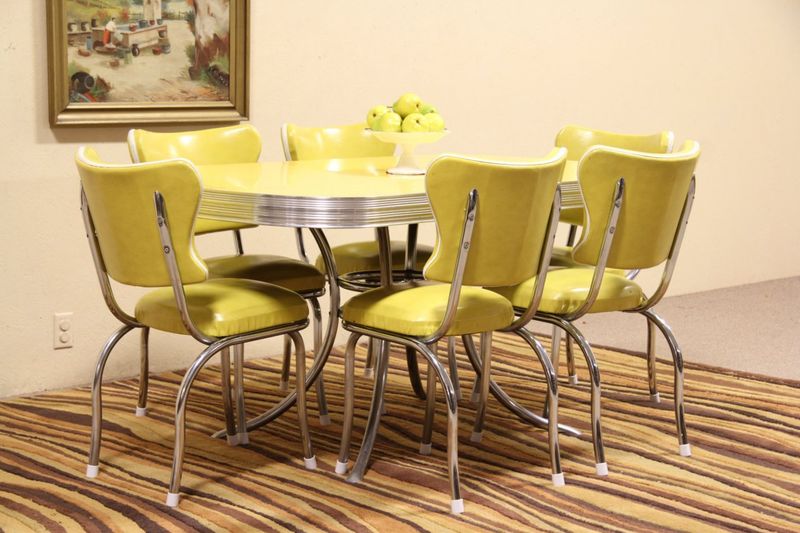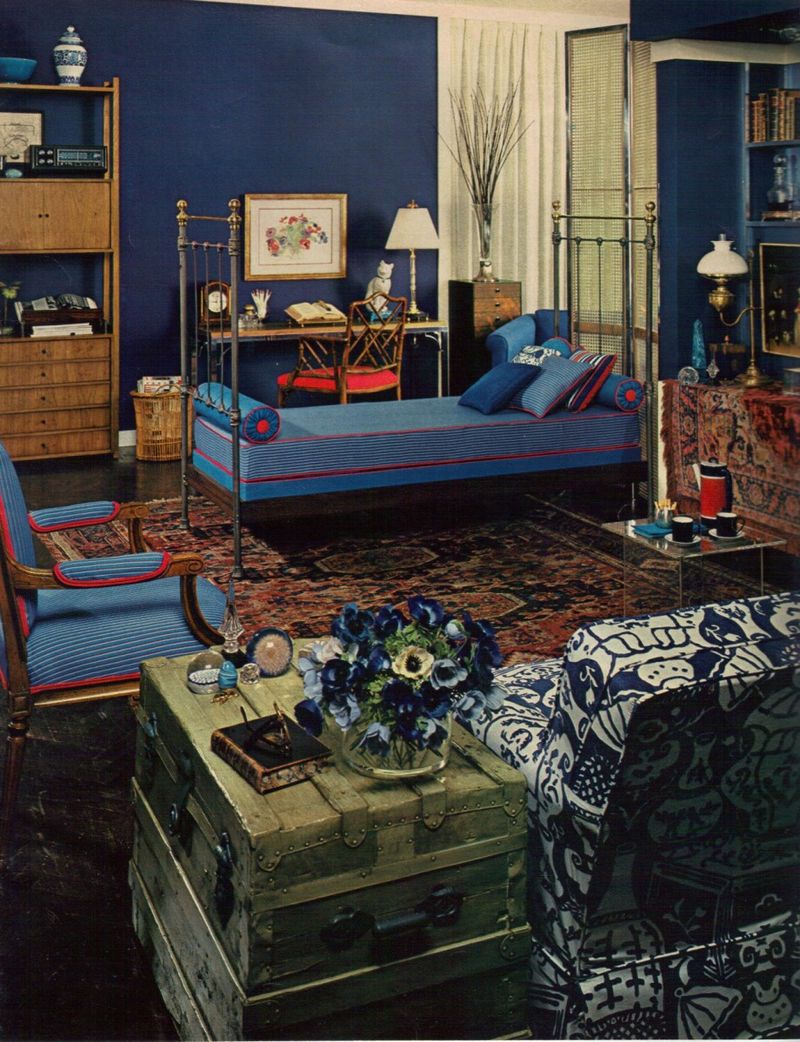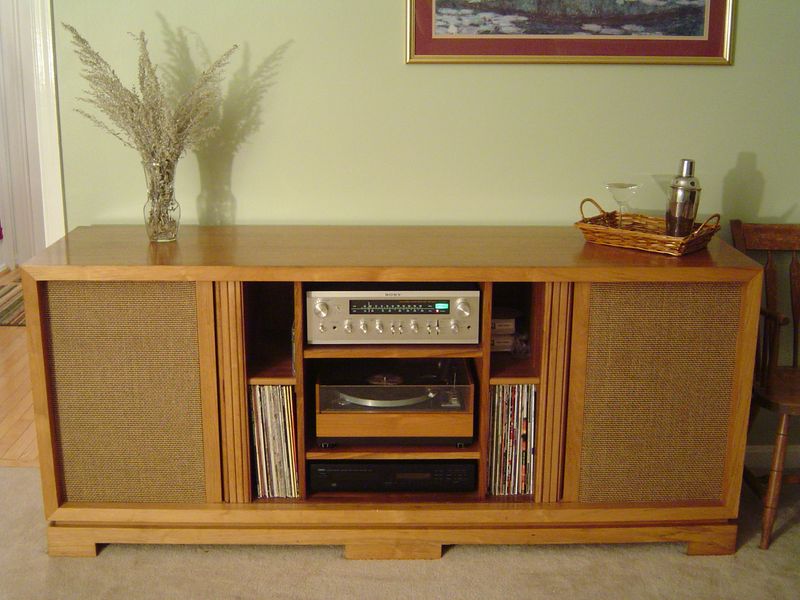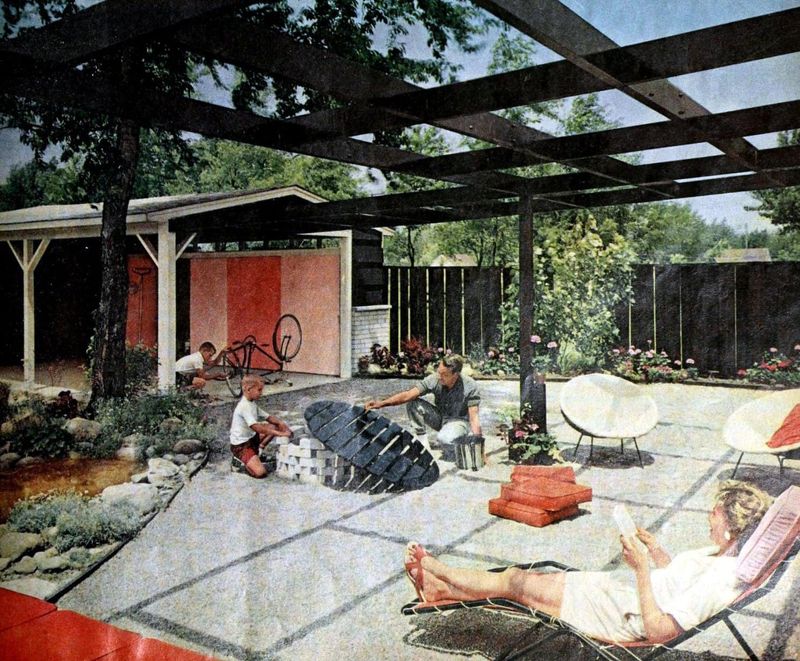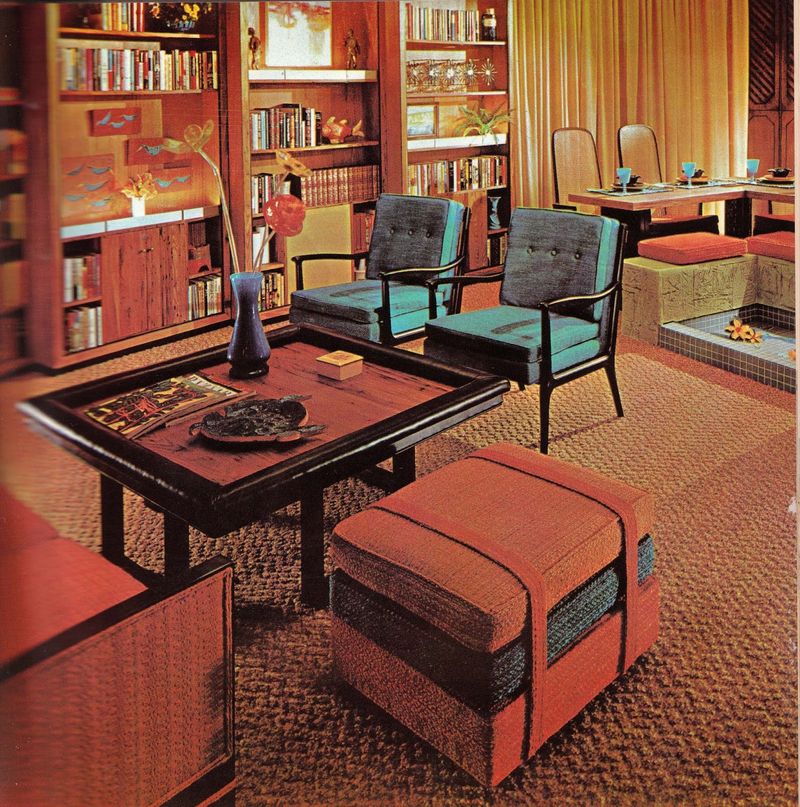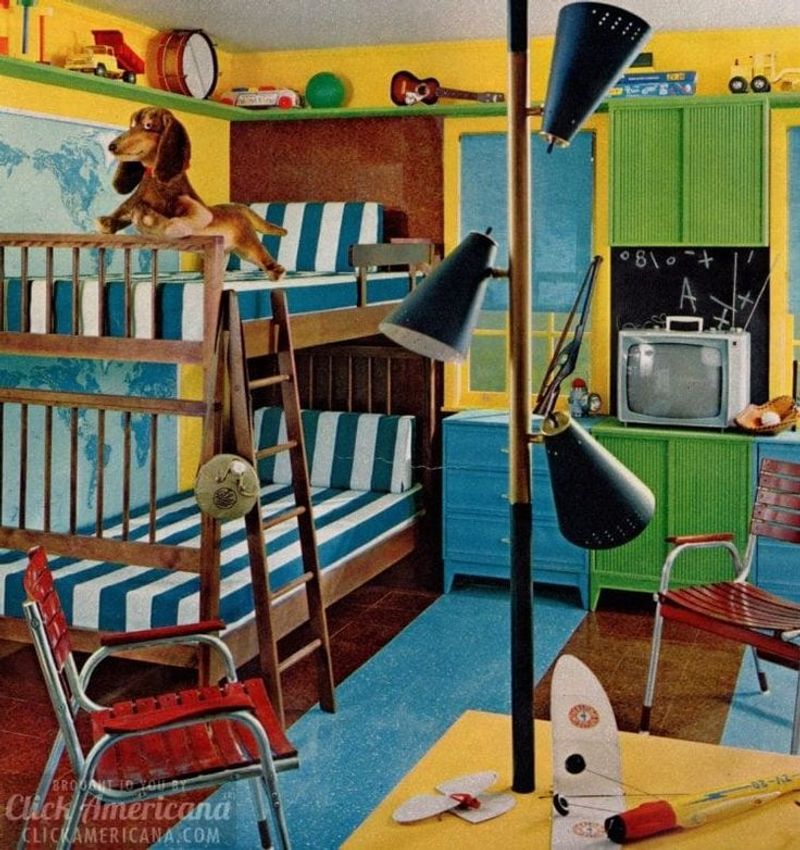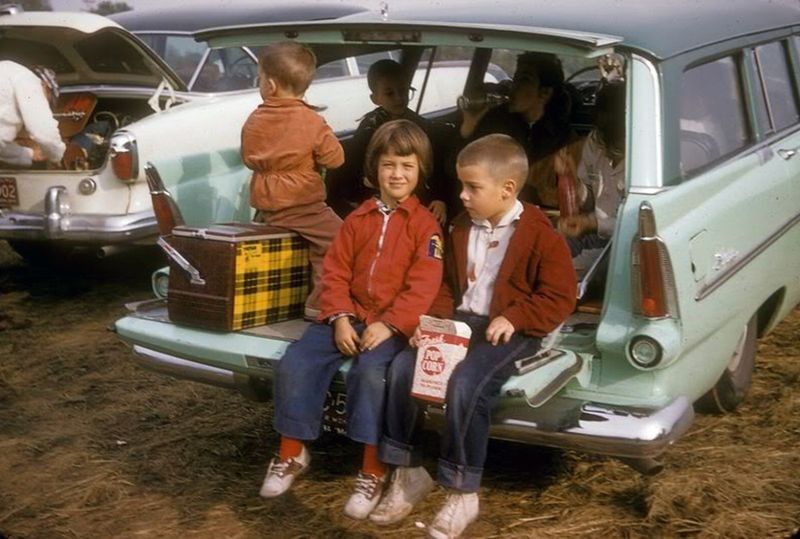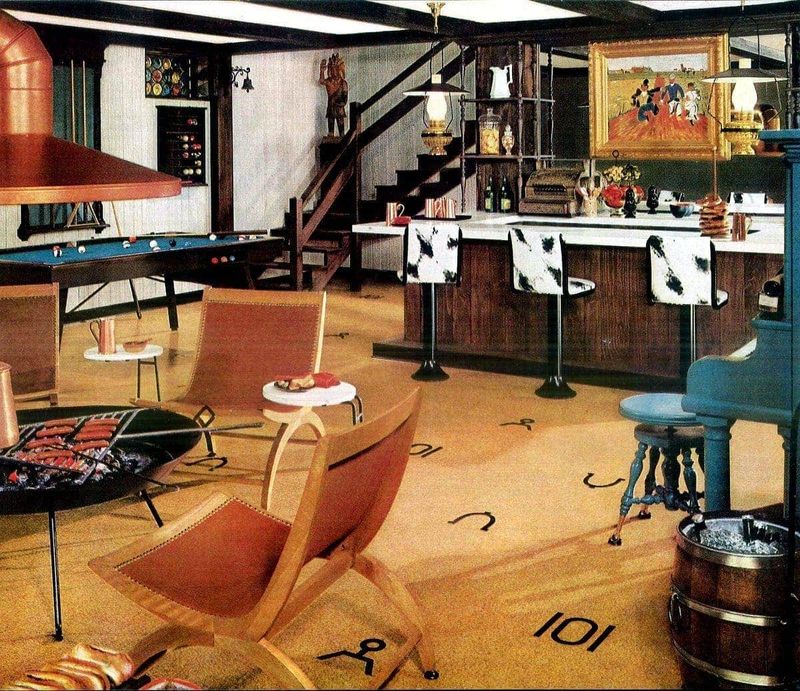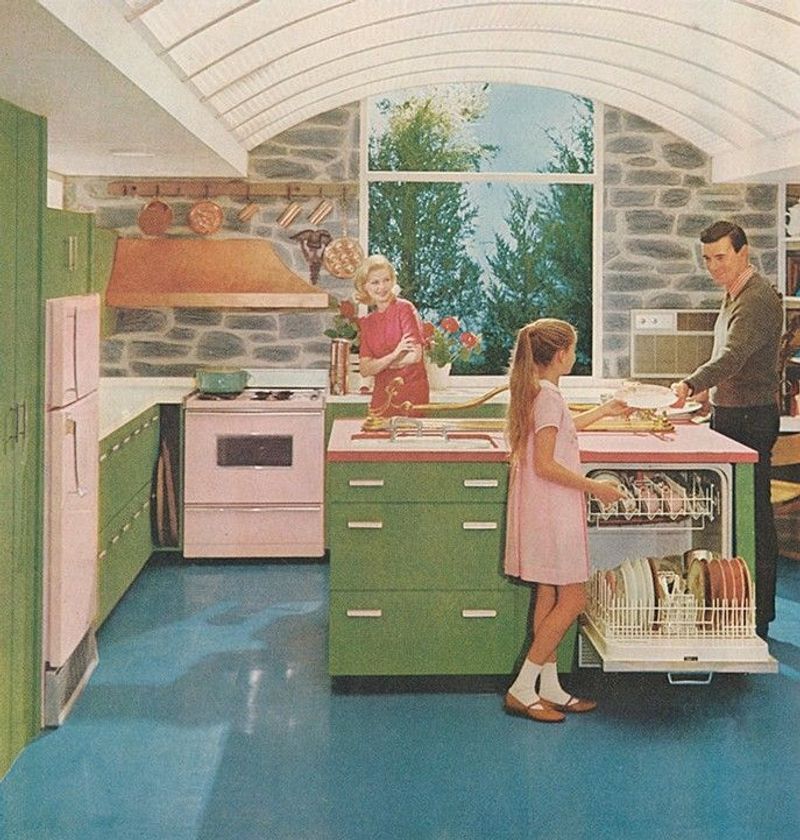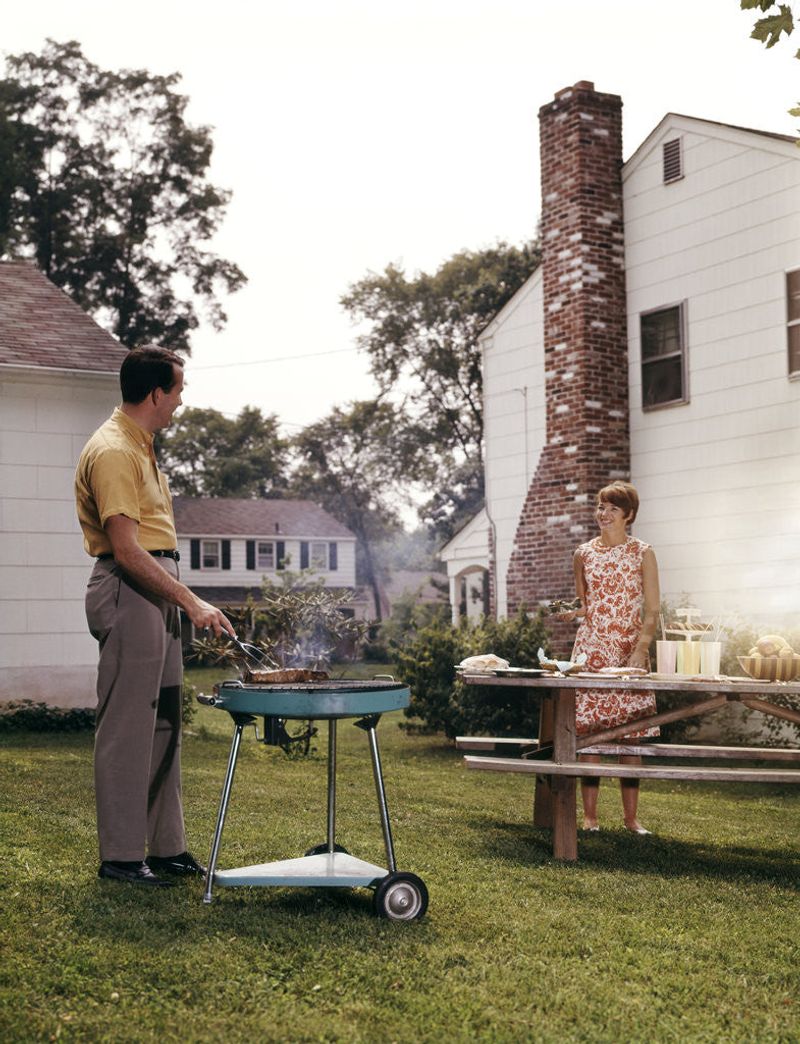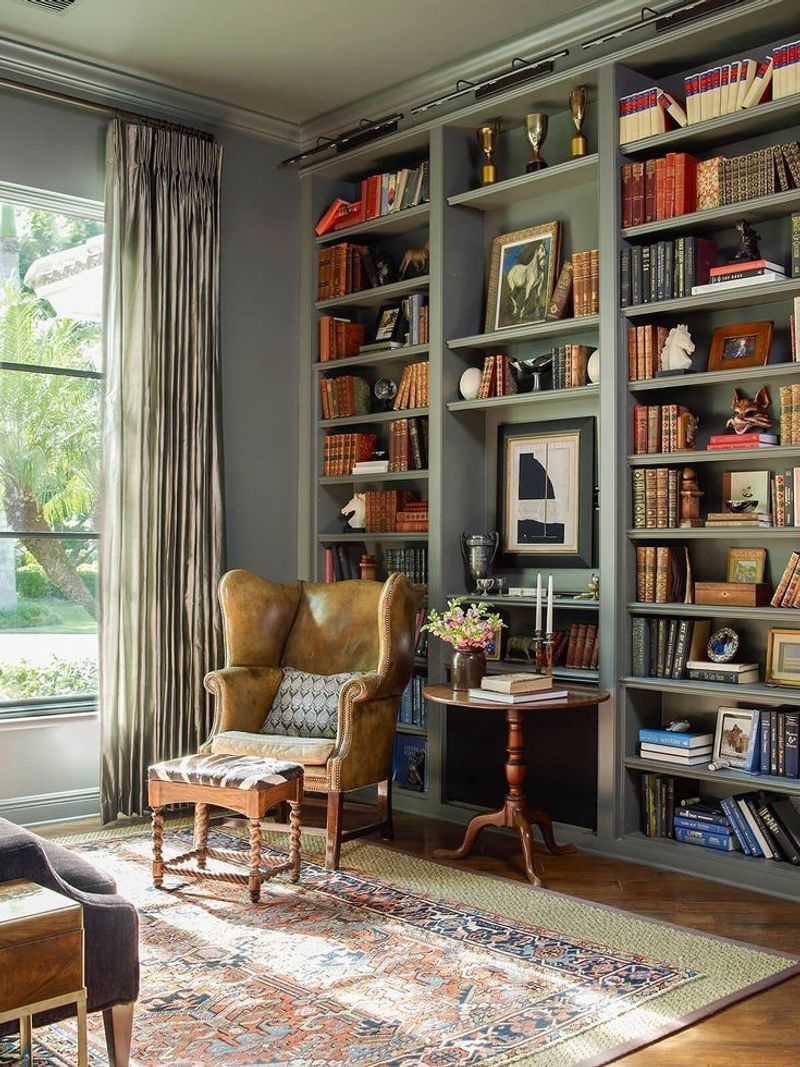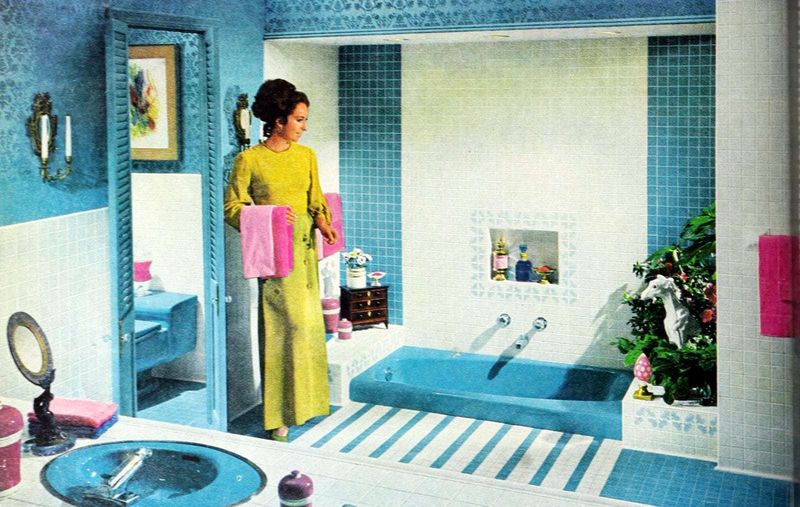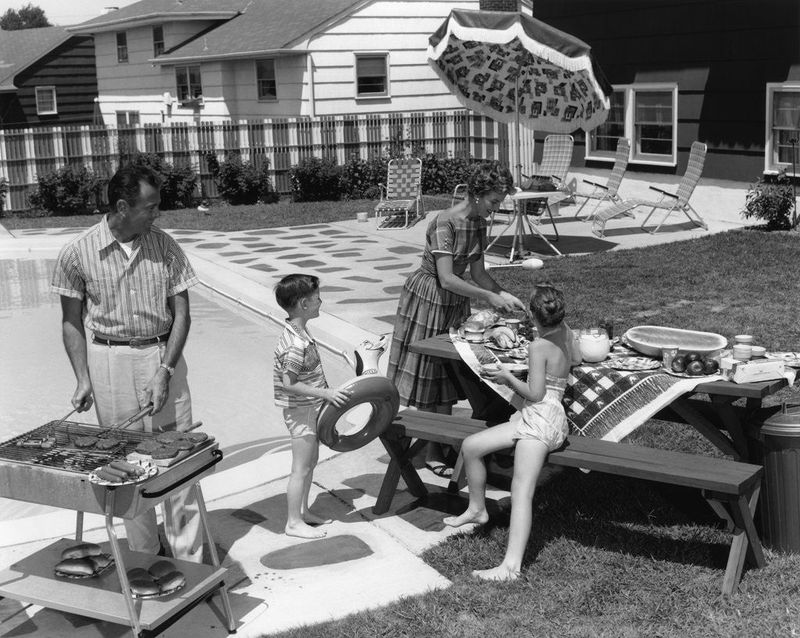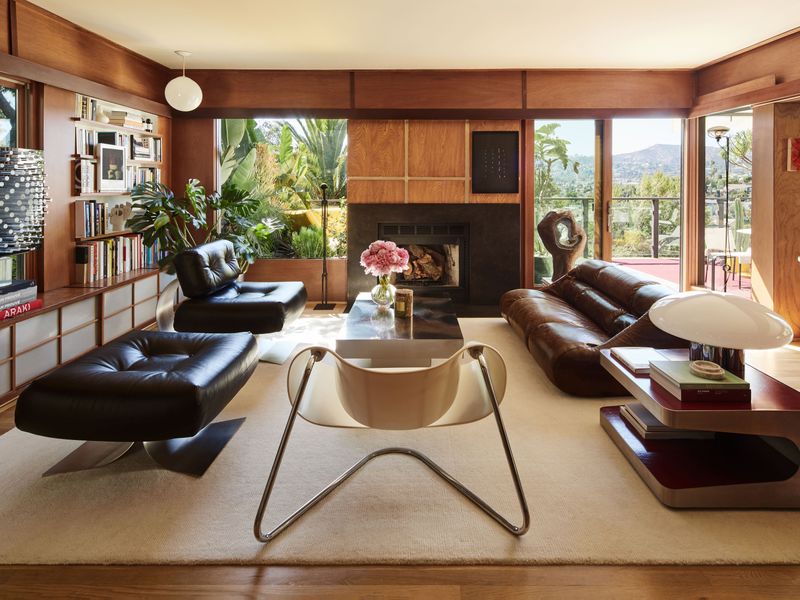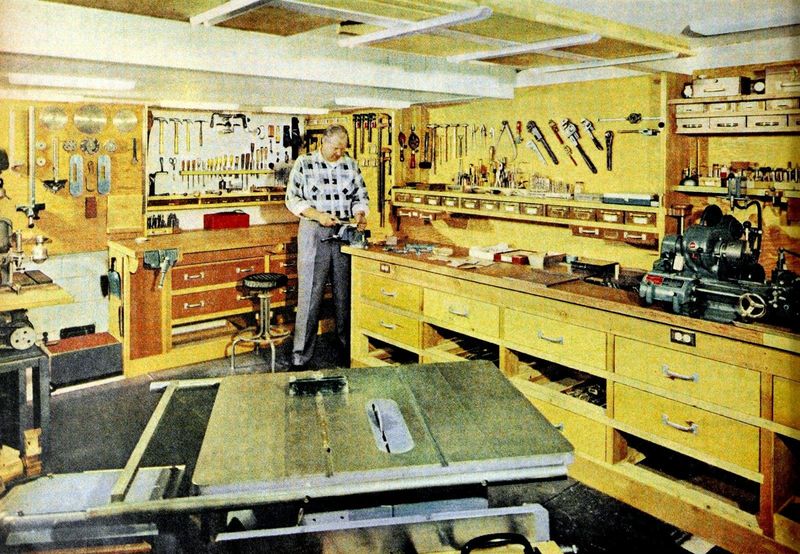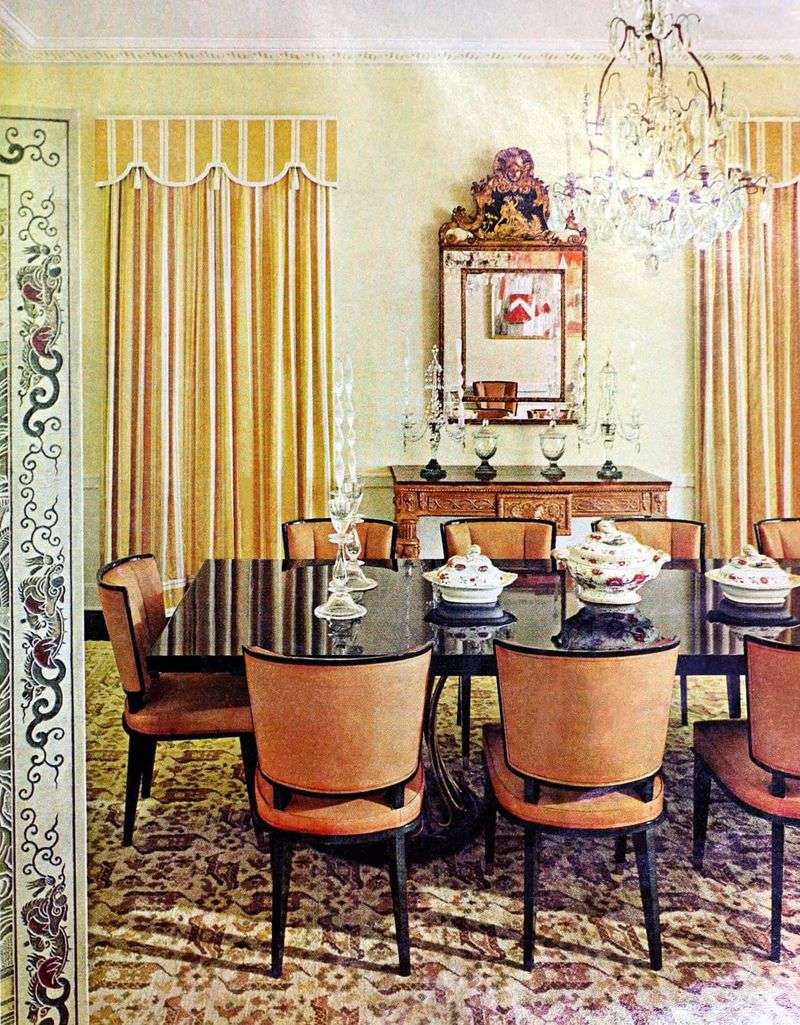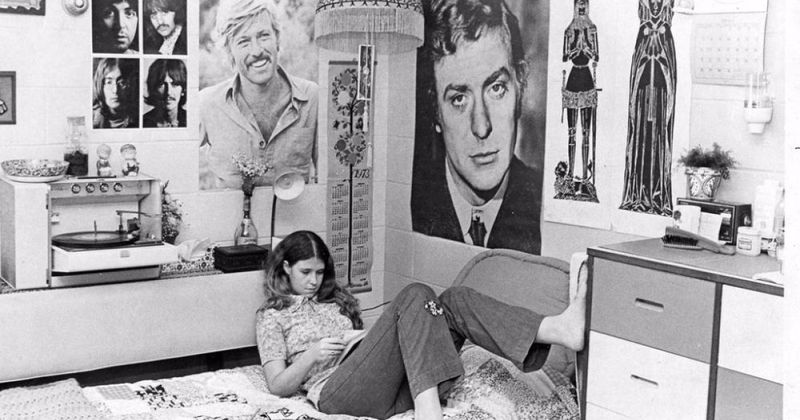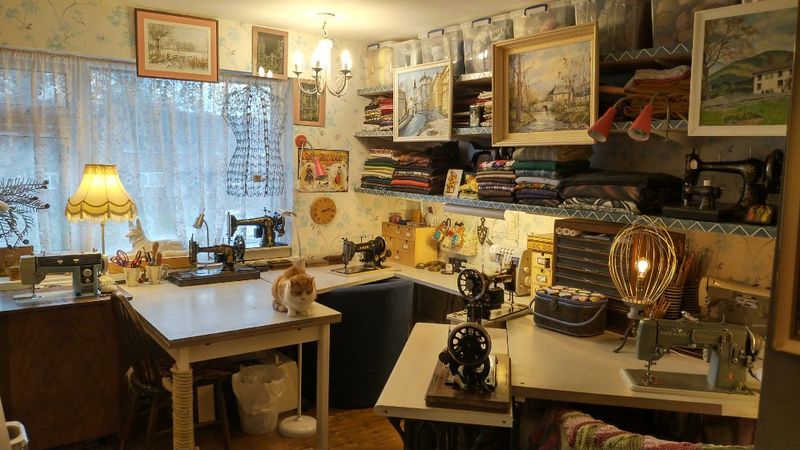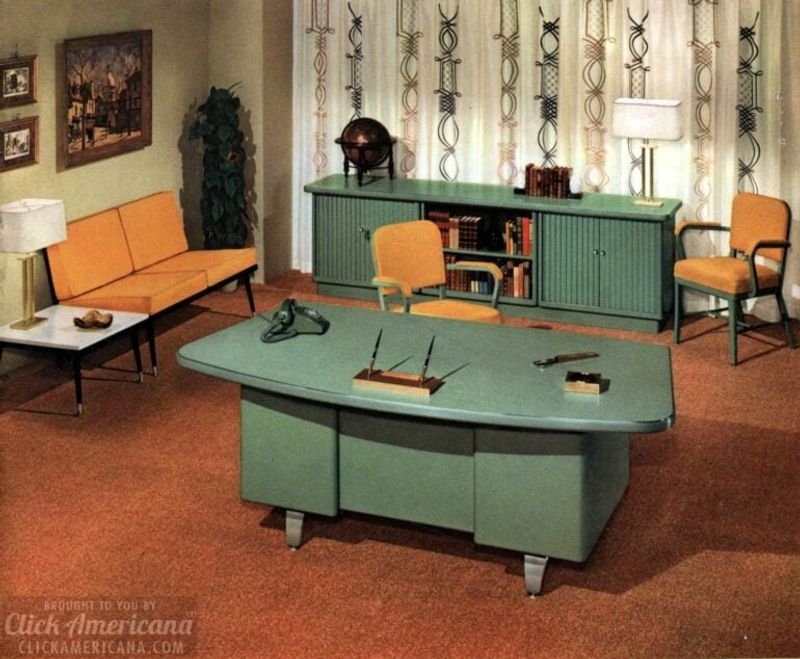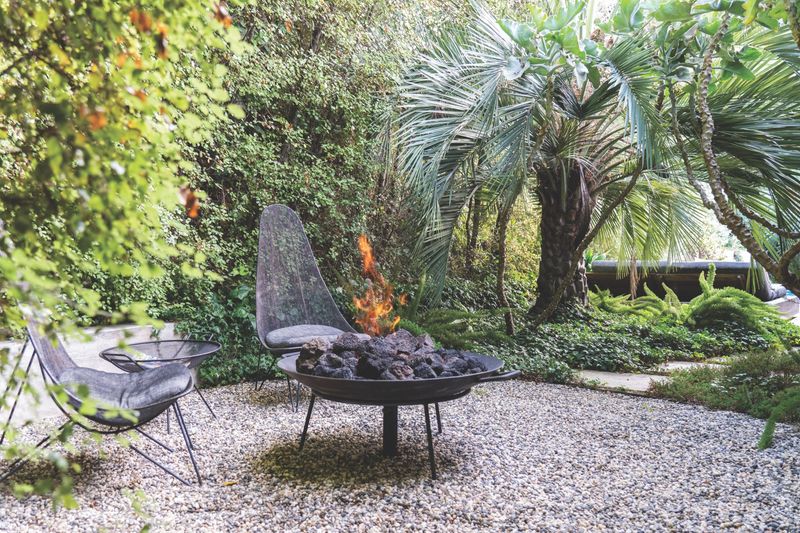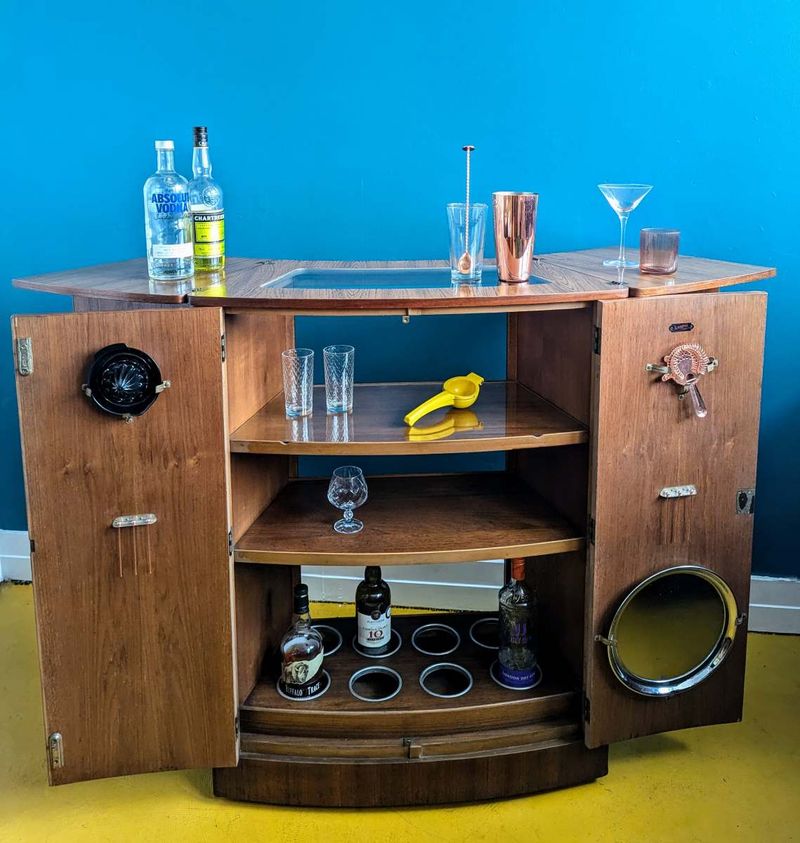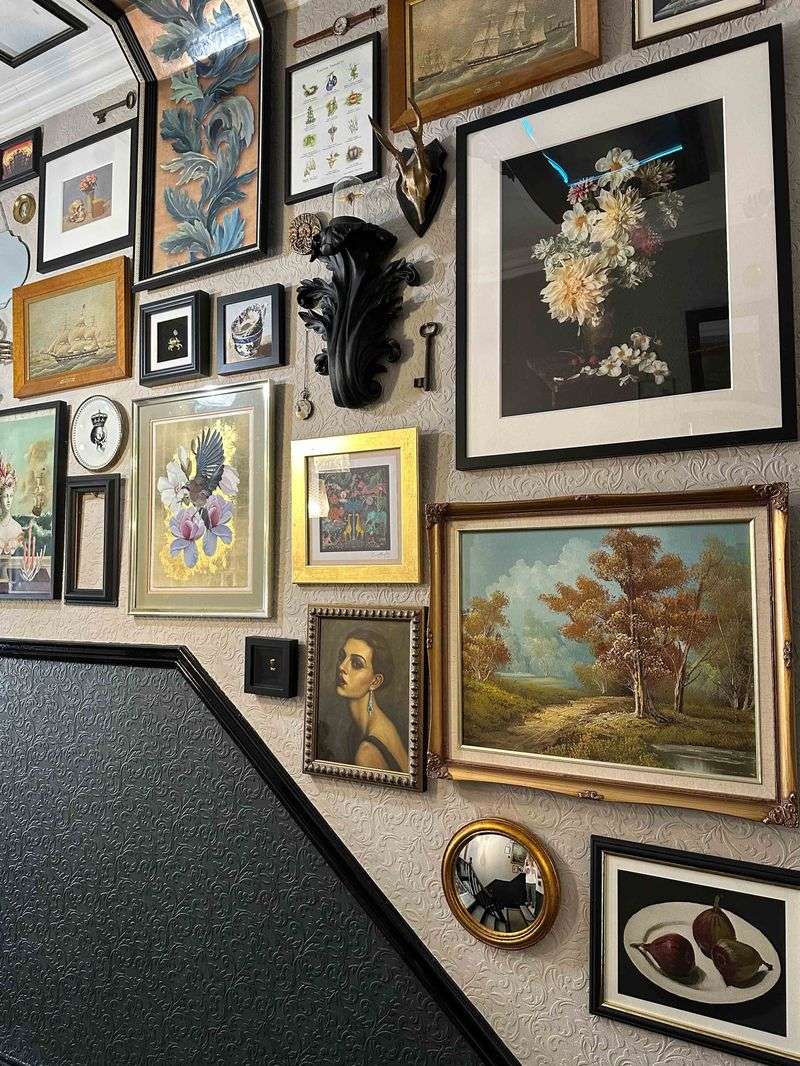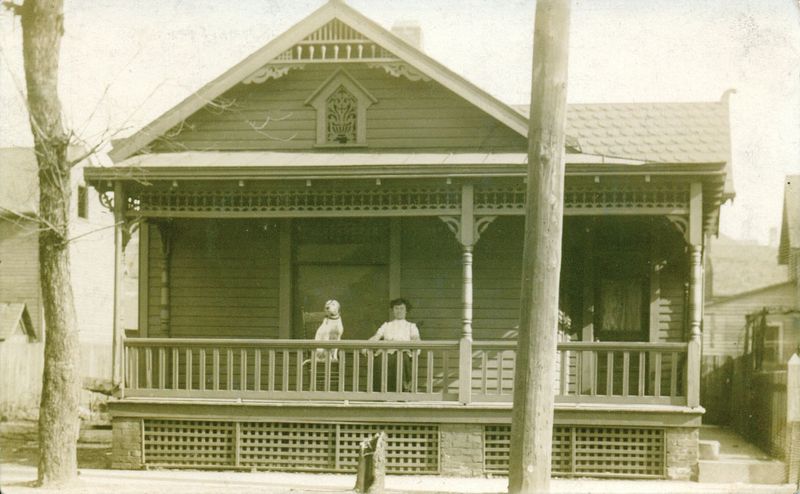The 1960s was a transformative decade for American homes, characterized by unique styles, cultural shifts, and emerging technologies. Through a collection of vintage photographs, we can gain a fascinating insight into the everyday lives and environments of families living during this vibrant period. This blog post delves into 25 distinctive elements that reveal what home life was genuinely like during this iconic era.
1. Family Living Room Scenes
Peering into a 1960s living room feels like stepping into a warm, familial hug. The space often featured mid-century modern furniture, with sleek lines and bold colors. A vintage television set was the centerpiece, drawing families together for evening entertainment. Patterned wallpapers adorned the walls, adding a touch of personality. The room was a hub of activity, where children played board games on a shag carpet and parents relaxed with a cup of coffee. This setting paints a picture of an era where family connection was nurtured amidst the backdrop of stylish furnishings.
2. Kitchens with Flair
The kitchen was the heart of the home in the 1960s, bustling with activity and flair. Retro appliances, like pastel-colored refrigerators and stovetops, were both functional and stylish. Checkered floors and Formica countertops added to the aesthetic appeal. Here, you might find a housewife baking a pie, surrounded by the aroma of freshly baked goods. Kitchens were a testament to the era’s innovation and charm, where culinary arts met domestic bliss. This space reflects how the decade embraced both tradition and change, blending old-world charm with new gadgets.
3. The Iconic Dinette Set
Imagine a dinette set in a 1960s home, complete with a Formica table and chrome accents. These sets were the epitome of convenience and style, featuring colorful chairs that added a pop of brightness to the home. Families gathered here for meals, discussions, and laughter. The dinette set was more than just furniture; it was a symbol of the decade’s modernity and practicality, reflecting a shift towards casual, yet stylish living. These settings were where everyday moments became cherished memories, encapsulating the spirit of a time that valued both form and function.
4. Vintage Bedroom Designs
Bedrooms in the 1960s were a vibrant mix of patterns and textures. Floral wallpaper provided a lively backdrop against which wooden bed frames stood. Colorful bedspreads added to the room’s cheerful personality. These spaces were retreats of comfort, where personal style was expressed through bold design choices. Often, you’d find a record player in the corner, serenading the room with the latest hits. Bedrooms were as much about rest as they were about showcasing the era’s eclectic and exuberant style. This sanctuary was where dreams were woven into the fabric of 1960s life.
5. Home Entertainment Centers
The 1960s saw the rise of elaborate home entertainment centers, often featuring record players, radios, and sometimes even a television all housed in a large wooden console. These were the pride of the household. Families and friends gathered to enjoy music and radio shows, reflecting the era’s love for shared experiences. The console, with its polished finish and intricate design, was not just a piece of furniture, but a centerpiece for creating lasting memories. This setting symbolizes the blend of technology and tradition that defined the 1960s, offering a glimpse into the communal joys of home entertainment.
6. Porch and Patio Life
The porch and patio were quintessential elements of 1960s home life. Outfitted with retro outdoor furniture, these spaces were perfect for relaxation and socializing. Families often gathered here for drinks and barbecues on warm summer days. The patio was not just a place for leisure but a platform for community building, where neighbors would drop by for casual chats. The inclusion of a barbecue grill highlighted the era’s embrace of outdoor living, emphasizing a connection with nature and the pleasure of simple gatherings. These moments on the patio encapsulated the spirit of camaraderie and relaxation.
7. Fashionable Home Decor Trends
The 1960s was a decade that embraced bold and daring home decor trends. Living spaces were adorned with vibrant colors and striking patterns, reflecting the era’s adventurous spirit. From geometric designs to psychedelic prints, every piece told a story. Decor items like lava lamps and bean bag chairs became popular, adding a playful touch to the home. This was a time of experimentation and self-expression, where decor was not only functional but also a reflection of individuality. The lively and creative atmosphere of 1960s homes was a testament to the period’s dynamic cultural shifts.
8. Classic Children’s Bedrooms
Children’s bedrooms in the 1960s were a playground of imagination and color. Vibrant wallpapers adorned the walls, often featuring playful patterns or beloved cartoon characters. Bunk beds were common, serving both practicality and fun. Toys scattered across the room painted a lively picture of childhood adventures. From train sets to dolls, these rooms were a haven for creativity. The design was not just about aesthetics; it fostered an environment where children could dream and explore. Each element of these rooms contributed to a nurturing and lively space for young minds to flourish.
9. The Iconic Family Station Wagon
The family station wagon was a staple of the American home in the 1960s. With its spacious interior and distinctive design, it became the vehicle of choice for family outings and road trips. Parked in suburban driveways, these cars symbolized freedom and adventure. Children often played nearby, their laughter echoing the carefree spirit of the time. The station wagon was more than just a means of transport; it was a vessel for creating cherished memories and exploring new horizons. Its presence in suburban life underscored the decade’s emphasis on family and exploration.
10. Basement Rec Rooms
The basement rec room was a hidden gem in many 1960s homes. Equipped with a pool table, vintage posters, and a bar area, it was the perfect retreat for relaxation and entertainment. These rooms were a sanctuary where adults could unwind or host friends, often adorned with memorabilia that reflected personal tastes. The bar area, stocked with cocktail essentials, added an air of sophistication. Rec rooms were a versatile space, embodying the decade’s love for leisure and socializing. They provided an escape within the home, where laughter and camaraderie flourished.
11. The Rise of Home Appliances
The 1960s marked a significant advancement in home appliances, revolutionizing domestic life. Kitchens boasted modern conveniences like microwaves and dishwashers, which made daily chores more efficient. These appliances represented progress, reducing the time spent on household tasks and allowing more leisure time for families. The sleek, innovative designs of these machines blended seamlessly into the home, making them both practical and stylish. The adoption of such technologies reflected the decade’s drive towards modernity and convenience, enhancing the quality of home life through innovation and ease.
12. Suburban Lawn Culture
In the 1960s, the suburban lawn became a symbol of the American dream. Meticulously maintained with a white picket fence, it was the pride of homeowners. Children played freely on the lush grass, their joyful screams filling the air. The lawn was a place for community interactions, where neighbors exchanged pleasantries over the fence. This patch of green represented more than just a yard; it was a reflection of the idyllic suburban lifestyle. The emphasis on pristine lawns showcased the decade’s focus on family, community, and the pursuit of an ideal living environment.
13. Home Libraries and Reading Nooks
Home libraries and reading nooks were cherished spaces in 1960s homes. Wooden shelves lined with books created a cozy ambiance, providing a retreat for literary escapades. A comfortable reading chair invited relaxation, where one could lose themselves in the pages of a novel. These spaces encouraged an appreciation for literature and quiet reflection, balancing the hustle of daily life. The presence of a home library was a testament to the value placed on knowledge and leisure, offering a serene escape where the mind could wander freely amid the comforts of home.
14. Stylish Bathrooms
Bathrooms in the 1960s were a blend of style and functionality, characterized by pastel-colored tiles and sleek design elements. A vanity mirror often took center stage, reflecting the era’s focus on elegance and flair. Decorative touches, like ceramic soap dishes and ornate light fixtures, added to the bathroom’s charm. These spaces were thoughtfully designed to balance practicality with aesthetic appeal, making daily routines a pleasant experience. The stylish bathrooms of the 1960s capture the essence of a time when design was as much about beauty as it was about comfort and convenience.
15. Backyard Barbecues and Picnics
Backyard barbecues and picnics were quintessential 1960s pastimes, bringing families and friends together in open-air celebrations. A picnic table laden with food and a grill sizzling with burgers and hot dogs set the scene. These gatherings were not just about the food, but the joy of shared moments under the sun. The aroma of grilled delights mingled with laughter, creating a sensory tapestry of happiness. Backyard events were a reflection of the era’s love for community and simple pleasures, offering a delightful escape into nature’s embrace.
16. Modular Home Designs
The 1960s saw the emergence of modular home designs, characterized by flat roofs, large windows, and minimalist gardens. These homes embraced simplicity and function, reflecting the modernist architectural trends of the time. The design was both practical and aesthetically pleasing, maximizing space and natural light. Modular homes represented a shift towards efficient living, where form followed function without sacrificing style. This architectural innovation symbolized the era’s forward-thinking approach, blending contemporary design with the comforts of home.
17. Garage Workshops
Garage workshops were a hallmark of 1960s homes, providing a space for hobbies and DIY projects. Equipped with tools and a sturdy workbench, these workshops were a haven for creativity and craftsmanship. Classic cars often shared space, reflecting the era’s automotive enthusiasm. The garage was more than just a place for storage; it was a sanctuary where individuals could tinker and create, embodying the spirit of innovation. Workshops were a tribute to the self-sufficiency and hands-on approach that defined the 1960s, nurturing both practical skills and personal passions.
18. Vibrant Dining Rooms
Dining rooms in the 1960s were vibrant and inviting, featuring wooden tables and colorful chairs that set the stage for family gatherings. A chandelier often hung above, casting a warm glow over meals. These rooms were not just about dining; they were about connection and celebration. The lively decor and thoughtful design invited conversation and camaraderie, creating a welcoming atmosphere. Dining rooms of the era captured the essence of hospitality, where delicious food was paired with the joy of togetherness.
19. Teenage Hangout Spots
Teenage hangout spots in the 1960s were a reflection of the era’s youth culture, often marked by record players and posters of popular bands. Bean bags provided a casual seating option, creating a laid-back vibe. These rooms were sanctuaries for self-expression, where teens listened to music and dreamt about the future. The decor mirrored the vibrancy of youthful energy, with every element speaking to individuality and creativity. Teenage rooms were more than just spaces; they were a backdrop for the hopes and aspirations of a generation coming of age in a dynamic decade.
20. Craft and Sewing Rooms
Craft and sewing rooms were vital in 1960s homes, offering a dedicated space for creativity and handiwork. Equipped with a sewing machine and fabric rolls, these rooms were the heart of homemade fashion and crafts. The cutting table was a central feature, where ideas took shape. These spaces were not just about sewing; they were about nurturing talent and self-expression. Craft rooms celebrated the era’s DIY spirit, allowing individuals to create and innovate within the comforts of home. This environment fostered a culture of creativity and personal achievement.
21. Stylish Home Offices
Home offices in the 1960s were stylish and functional, featuring wooden desks and typewriters that facilitated productivity. Bookshelves lined with reference materials added a scholarly touch. These offices were more than just workspaces; they were environments that encouraged focus and ingenuity. The design balanced aesthetics with practicality, making them conducive to both creativity and efficiency. Home offices of the era captured the spirit of ambition and diligence, reflecting the values of a time when personal and professional growth were paramount.
22. The Family Fire Pit
The family fire pit was a beloved feature of 1960s backyards, offering a cozy spot for gatherings. Surrounded by outdoor seating, it was a place where stories were shared and marshmallows roasted. The crackling flames provided warmth and ambiance, creating a magical setting under the starlit sky. The fire pit was more than just a feature; it was a focal point for connection and relaxation. This element of outdoor living epitomized the era’s appreciation for togetherness and nature, providing a backdrop for memorable evenings spent with loved ones.
23. Retro Home Bars
Home bars in the 1960s were a chic addition to the living space, often stocked with cocktail glasses and vintage liquor bottles. Bar stools provided seating for casual gatherings. These bars were more than just a place for drinks; they were a symbol of sophistication and leisure. The presence of a home bar reflected the era’s social culture, where hosting and entertaining were revered. This feature enhanced the home environment, turning ordinary evenings into special occasions.
24. Family Photo Walls
Family photo walls were a cherished feature of 1960s homes, often adorning hallways with captured memories. Vintage frames held black-and-white photos that chronicled family stories. These walls were more than just decoration; they were a testament to love and history, preserving moments for generations to come. The arrangement of photos created a visual narrative, celebrating the ties that bound families together. This feature was a reflection of the era’s emphasis on family and legacy, offering an intimate glimpse into the lives of those who cherished their roots.
25. The Classic Front Porch
The classic front porch was a welcoming feature of 1960s homes, often equipped with rocking chairs and a swing. Potted plants added a touch of greenery, enhancing the inviting atmosphere. This space was a vantage point for observing neighborhood life, where families would relax and engage in friendly conversations. The porch was more than just an entryway; it was a communal area that fostered connections and offered comfort. This element of home life encapsulated the era’s warmth and hospitality, serving as a cherished spot for rest and reflection.
